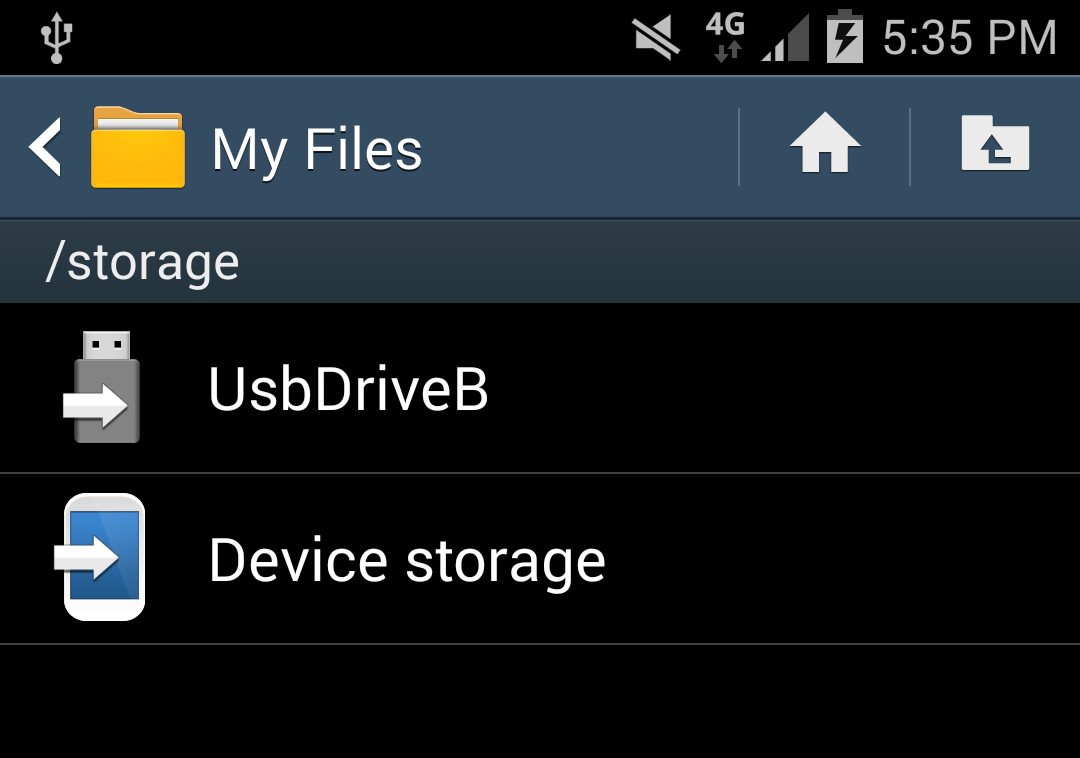There are three main ways to add storage to your phone or tablet when microSD is not an option.
Add microSD support to your phone or tablet with a USB OTG card reader or OTG hub
This tiny gadget can house a MicroSD card up to 64GB in capacity, and features a Micro-USB connection that lets you plug it into your phone or tablet. As long as your Android device supports USB OTG (many do), the microSD card will show up as USB storage. Clearly you won’t want to leave the Inateck attached to your phone at all times, but it’s small and compact, and features a plastic plug that lets you attach it to the phone’s headphone port so it doesn’t get lost. Our only gripe is the fact the end cap that protects the Micro-USB port isn’t tethered. New, it’s a fairly snug fit, but we don’t suppose it’ll be long before this small plastic piece goes missing. An alternative solution is to use an OTG hub, which lets you connect more than simply a microSD card. Inateck’s HB3001G has three USB 2.0 ports, plus card slots for microSDHC, TF, MS and M2. You can simultaneously use all available inputs if required, although with high-powered devices attached to the hub you will also need to plug it into a USB charger using the supplied power cable. This means you can save films, pictures, music, documents and more on various removable storage, including USB flash drives and memory cards, and you can even attach cameras, hard drives, mice and keyboards. With these devices hooked up to your phone via the USB OTG hub, you can then use a file browser app to examine the connected drives and select and view your files.
If you have several microSD cards tucked away containing media files, using a USB OTG hub may also take some of the pain out of having to constantly open up the phone to swap them out.
Add storage to your phone or tablet with a wireless hard drive
An alternative but more expensive and heavier solution is to buy a wireless hard drive, such as the £104 1TB Seagate STCK1000200 or £134 1TB Western Digital My Passport Wireless. Both let you connect multiple mobile devices, store files and stream media on the go. Add storage to your phone by utilising the cloud While 32GB phones and tablets are becoming more common, 16GB is still the standard for cheaper Android phones. And with the OS taking up a fair few gigs on its own, never mind the bloatware preinstalled by the manufacturer, it doesn’t leave a lot of room for your music, movies, photos and apps. A huge benefit of using an operating system built by Google is free access to its very good cloud-storage services. And if you’re worried about storing files in the cloud just in case the company goes bust and your stuff goes AWOL, be reassured that Google has little to fear on that front. Besides Play Music, which lets you store 20,000 songs in addition to any you’ve bought through the service, you also get Play Movies & TV and Google Drive. The latter offers 15GB of free storage, and if that’s not enough for your documents you can also try one of the other multiple cloud-storage services that have apps for Android – we’ve rounded up the best in our article Best cloud storage services 2016: Dropbox vs Google Drive, OneDrive, iCloud & more. Follow Marie Brewis on Twitter. Marie is Editor in Chief of Tech Advisor and Macworld. A Journalism graduate from the London College of Printing, she’s worked in tech media for more than 17 years, managing our English language, French and Spanish consumer editorial teams and leading on content strategy through Foundry’s transition from print, to digital, to online - and beyond.


